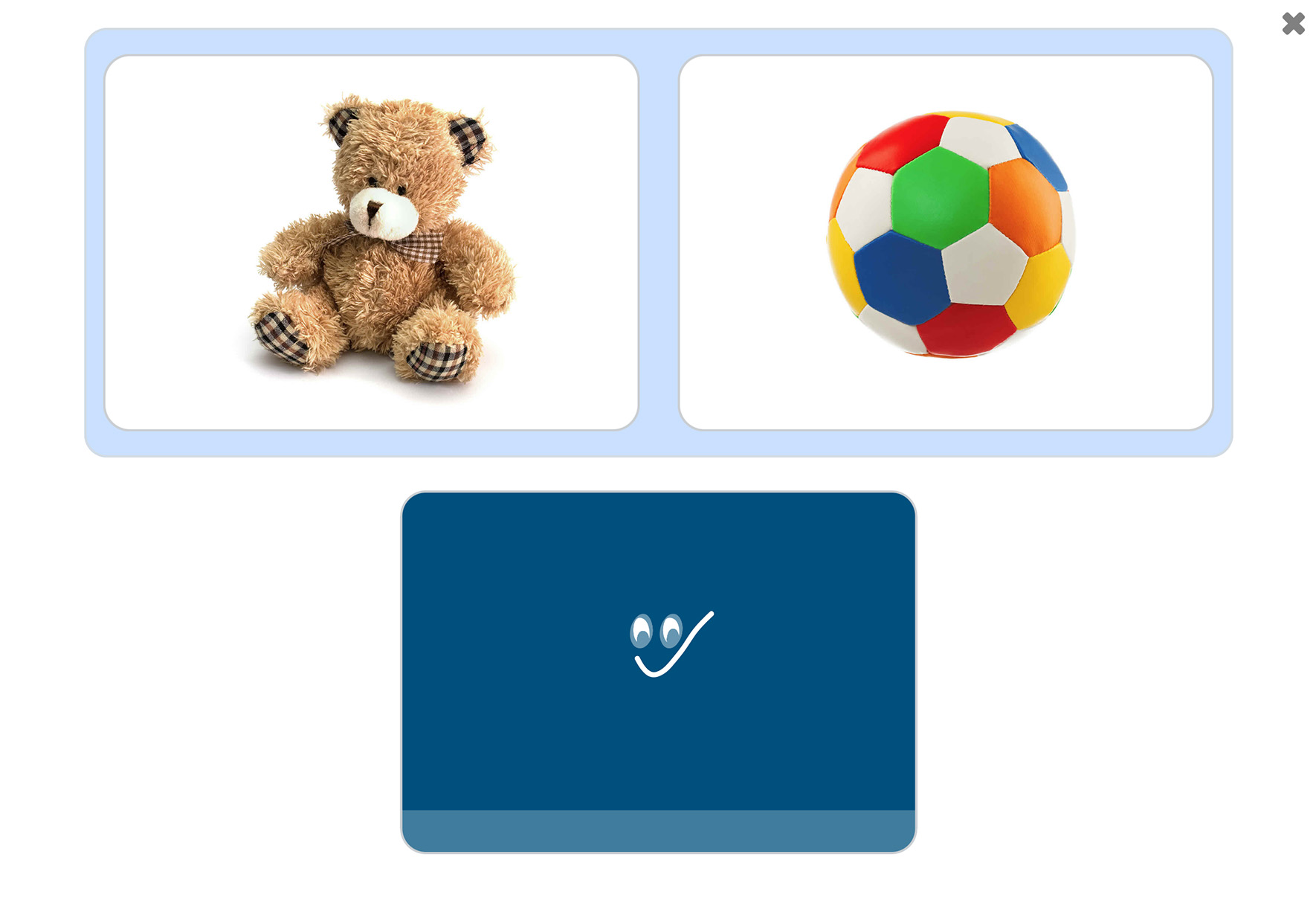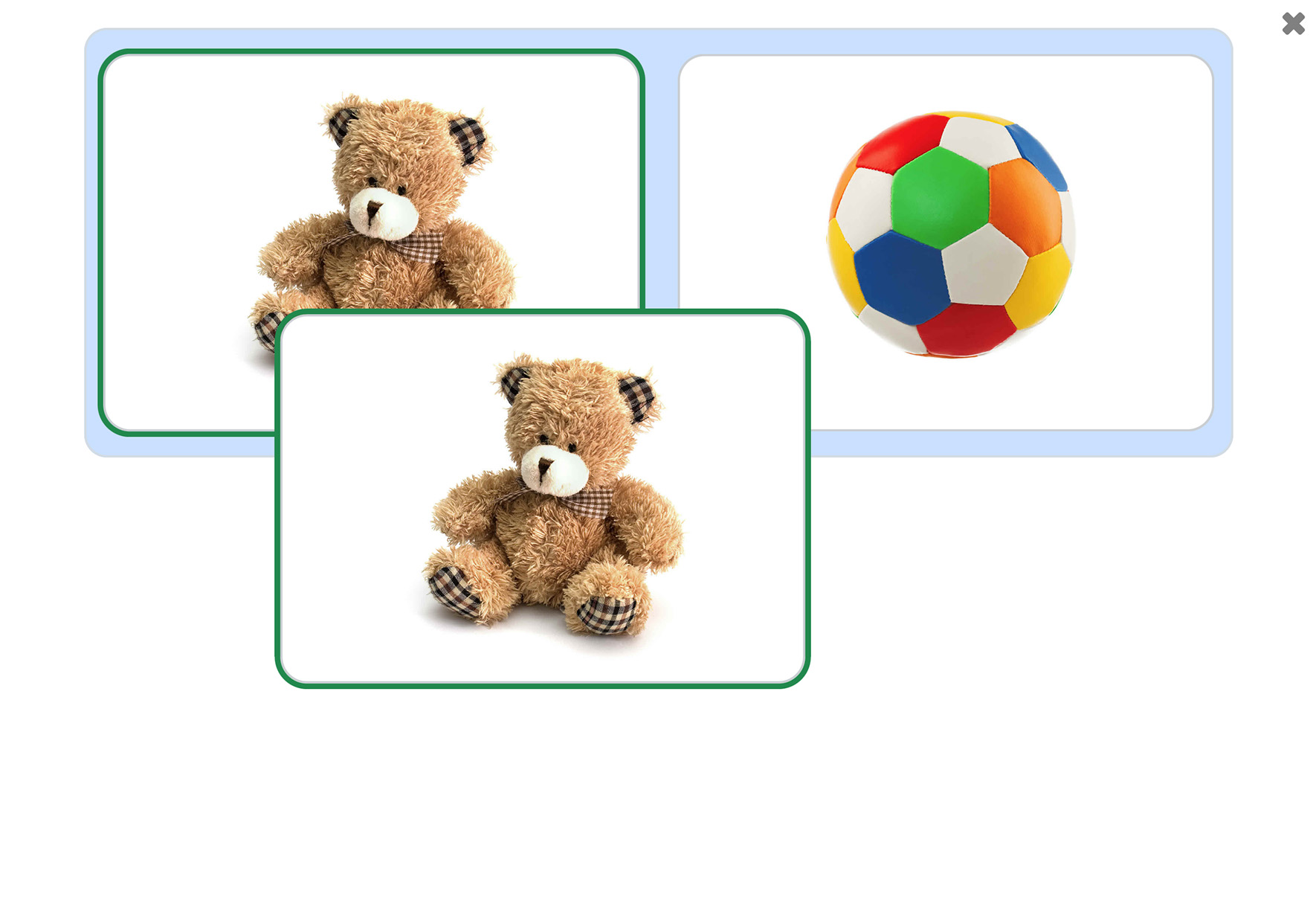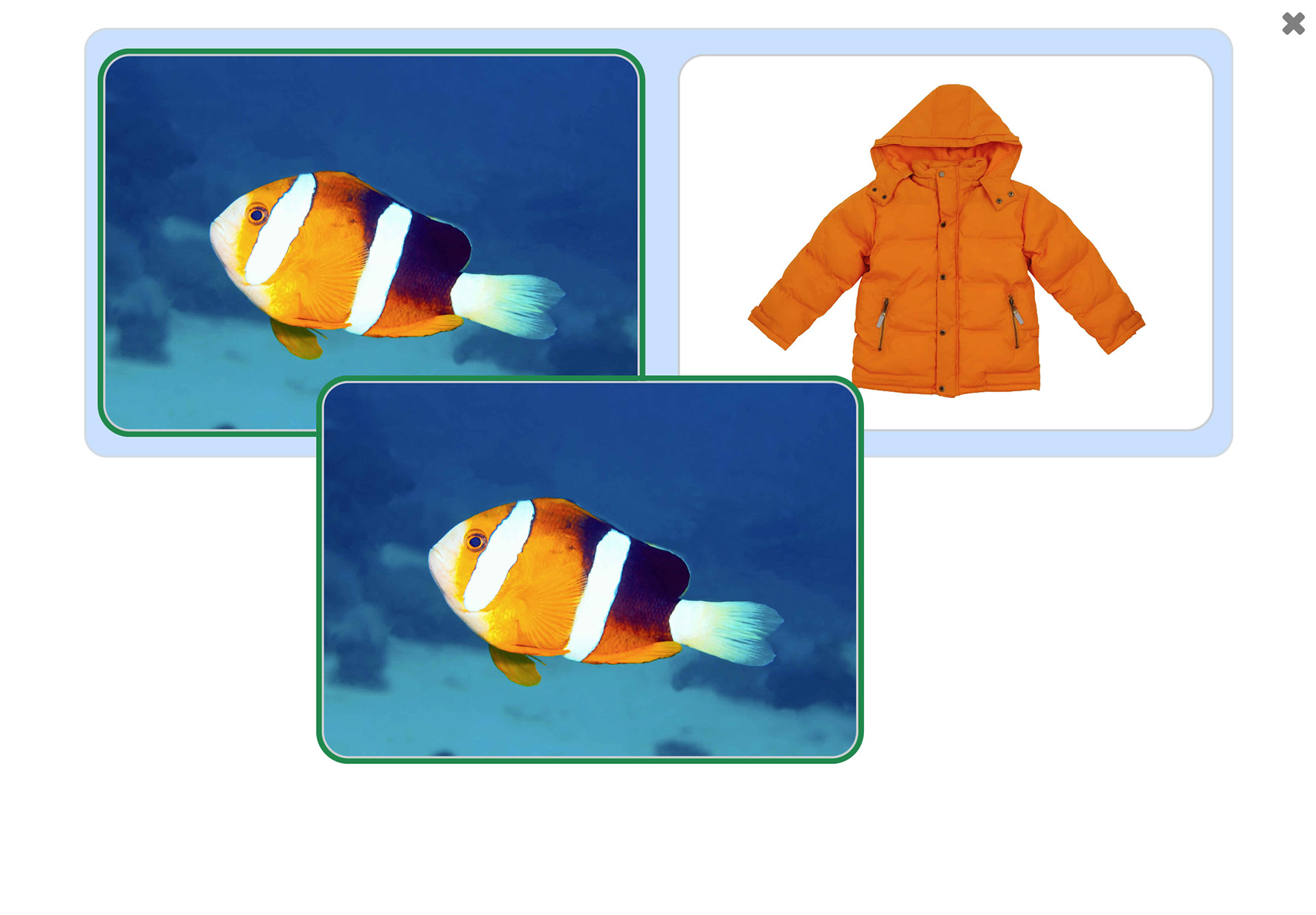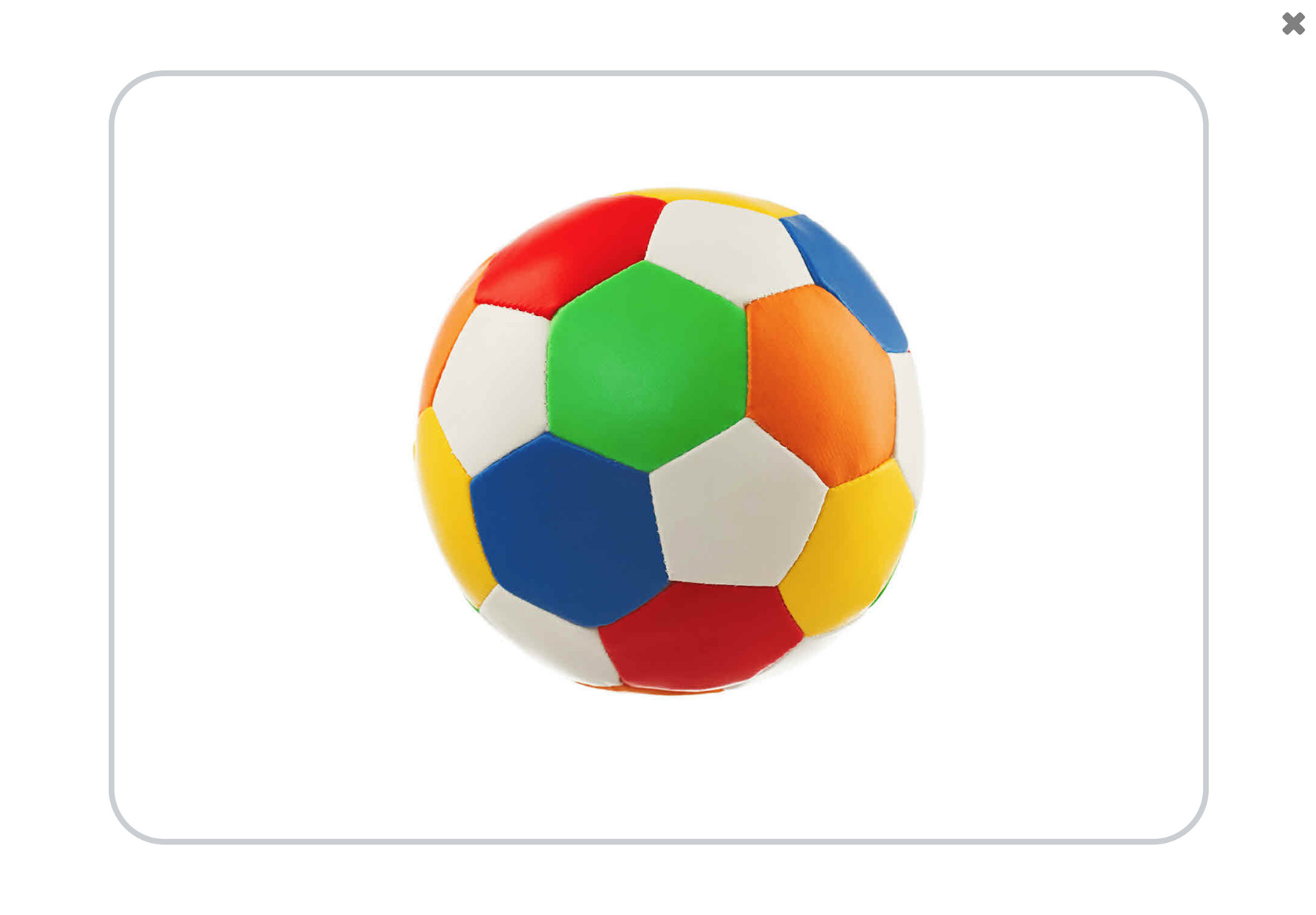Language and reading
See and Learn Language and Reading teaches children early vocabulary, sight words, simple phrases and sentences, and grammar rules.
See and Learn Language and Reading aims to accelerate the development of foundational language skills for children with Down syndrome and children with similar learning needs. It is designed to build on visual processing strengths and to compensate for short term memory, speech and hearing difficulties.
How See and Learn Language and Reading helps
See and Learn Language and Reading teaches early language skills and sight word reading following carefully structured and developmentally appropriate activities designed to:
- teach a vocabulary of over 300 early words, selected from those commonly learned in the early years by most children
- introduce reading for meaning with simple books using the taught vocabulary
- teach over 170 sight words, selected from taught vocabulary, using reading to support spoken language development and teaching foundational literacy skills
- teach over 130 two-keyword phrases illustrating how words can be combined in spoken language to communicate different meanings
- teach over 270 simple three-keyword sentences, highlighting carrier phrases, early grammar rules
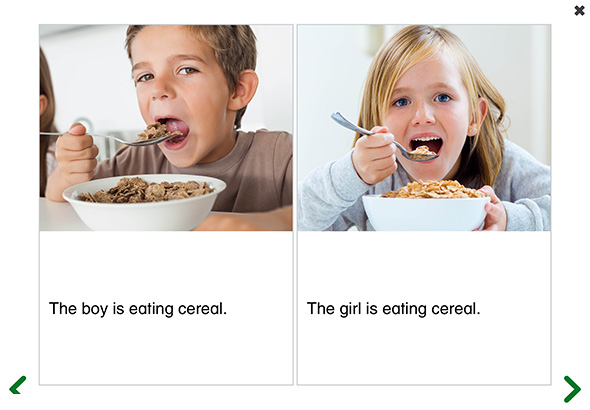
Progressing from first words to simple sentences
See and Learn Language and Reading is designed to help children progress from learning their first words to using simple sentences.
New vocabulary is selected from the words children typically learn when they first learn to speak. New words are introduced with clear photographs, providing visual representations of spoken words that can be used to test understanding even when children are still learning to say the words
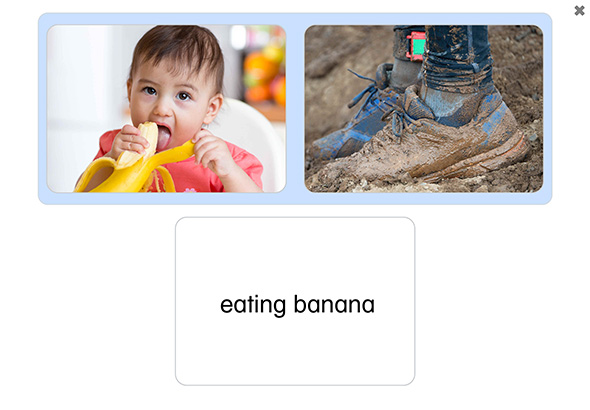
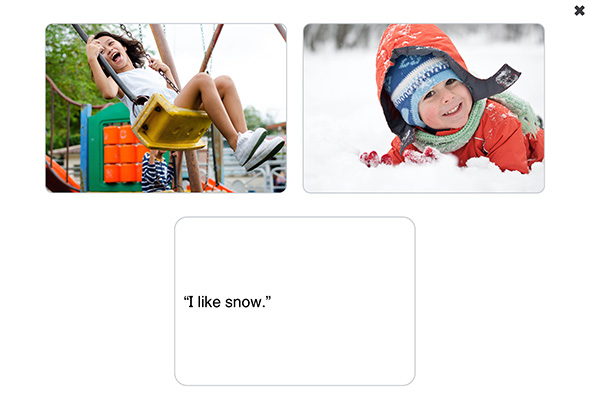
Vocabulary and sight words are taught with simple matching and selecting activities. Throughout the teaching activities, the child is encouraged to imitate and practise saying the spoken words. However, slower progress with speech development is not a barrier to learning new words and phrases and children are encouraged to communicate recognition and understanding via sign or gesture as necessary.
When children have a sufficient core vocabulary and an understanding of two keyword combinations, we then move on to introduce more complex phrases and short sentences, together with further explicit vocabulary instruction.
Learn more about the design of See and Learn Language and Reading
Steps
See and Learn Language and Reading currently includes seven steps.
The See and Learn Vocabulary steps introduce children to their first words at the earliest stage of language development in approximate developmental order. Each step is also designed to teach the vocabulary needed for a corresponding See and Learn Phrases step.
The See and Learn Phrases steps teach children to put spoken words together in a range of two key word phrases and to read their first sight words and phrases.
The See and Learn Sentences steps teach children to put spoken words together in longer sentences and use grammatical markers, including plurals, personal pronouns, past tenses, conjunctions, prepositions, negatives and question forms. These steps also continue to teach children new vocabulary and to read new sight words and sentences.

Each See and Learn Vocabulary step introduces the vocabulary needed for each See and Learn Phrases step. For example, See and Learn Vocabulary 1 introduces the vocabulary needed for See and Learn Phrases 1.
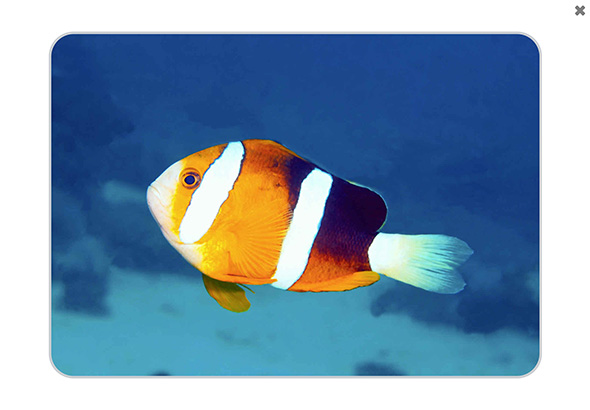
Vocabulary 1
See and Learn Vocabulary 1 offers activities to teach 60 words selected from the words most commonly learned first by most children.
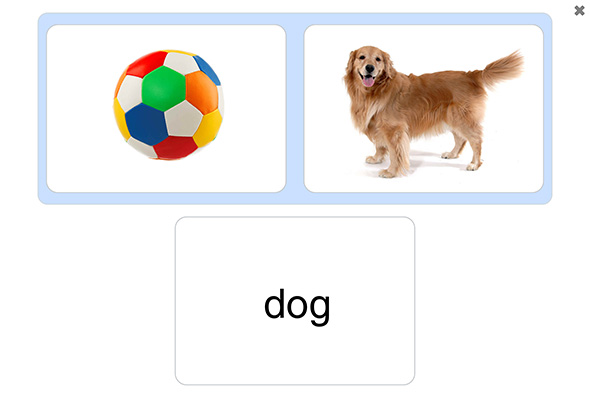
Phrases 1
See and Learn Phrases 1 teaches two-keyword phrases illustrated in themed books using early vocabulary. It introduces sight word reading using simple matching, selecting and naming activities.

Vocabulary 2
See and Learn Vocabulary 2 continues to teach early vocabulary, with 60 further words selected from the words most commonly learned early by most children.
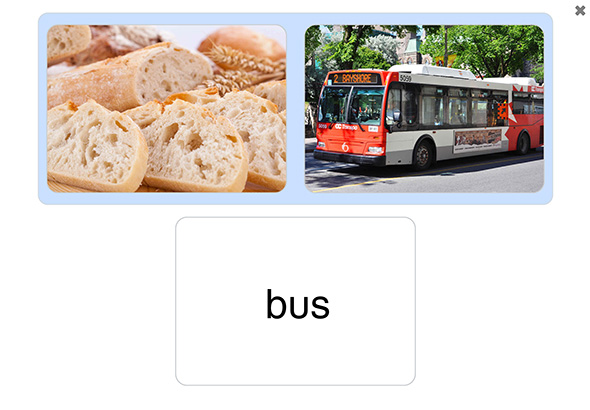
Phrases 2
See and Learn Phrases 2 continues to teach sight word reading using simple matching, selecting and naming activities, introducing 44 new two-keyword phrases and 30 new sight words.
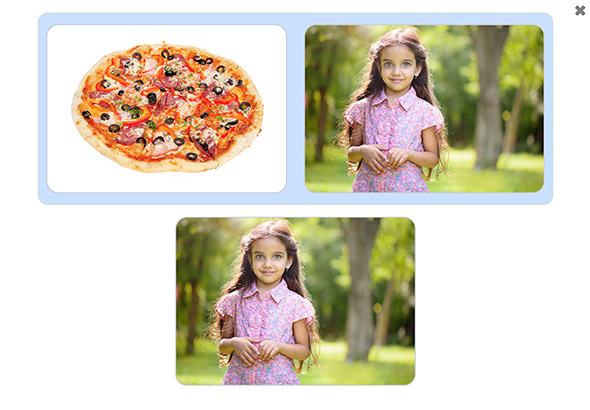
Vocabulary 3
See and Learn Vocabulary 3 continues to teach early vocabulary, with 60 further words selected from the words most commonly learned at a young age by most children.
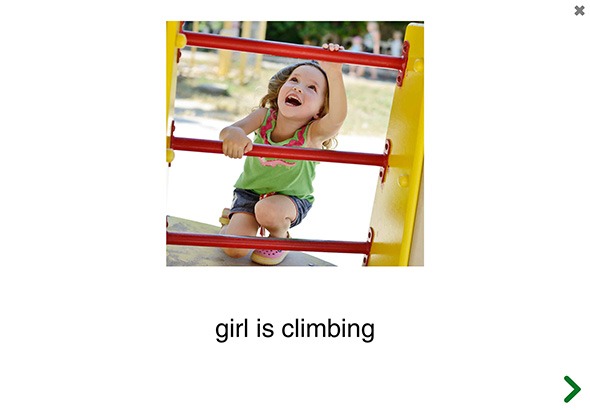
Phrases 3
See and Learn Phrases 2 continues to teach sight word reading using simple matching, selecting and naming activities, introducing 48 two-keyword phrases and 35 new sight words.

Sentences 1
See and Learn Sentences 1 continues to teach new vocabulary and sight words, and introduces simple sentences illustrating early grammar rules, supported by 25 graded reading books and 10 teaching activities.
Ready to get started?
Step through our guidance on how and when to get started with See and Learn.
